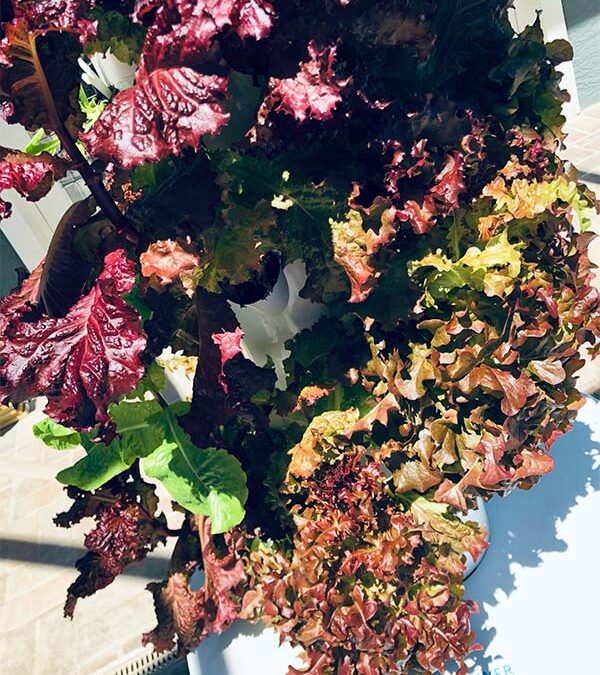What is Organic Growing?
In certified organic growing, the fertilizers used must come from a plant or animal base. The thing is, plants have 16 major macro and trace elements that they require. Whether those come from earth minerals, or from minerals in organic matter is irrelevant. Note: minerals are, by definition, inorganic. The word organic actually means carbon-based, or living, which refers specifically to plants and animals. Hence, an earth mineral cannot be organic.
What Nutrients are Used in Aeroponic Growing?
In hydroponic systems, we use earth minerals, otherwise you’d have dead plant-or-animal matter floating around, and it would rot and stink. The key difference between field organics and hydroponics/aeroponics is that the growing solutions utilize earth minerals refined in their purest form so that we know exactly what’s going into the plants in the right formulation to get what we want to get out of the plant.
NASA worked to develop mineral solutions that would put more nutrients into plants so that they could grow a healthier plant (for astronauts in space, because their food sources are so very limited). The question must be asked: if we’re raising nutrient dense, healthier plants for astronauts, why aren’t we doing the same thing in agriculture? And the answer is, invariably, we’ve never done it because we don’t have to. Agriculture is very price-point based; whether it’s organic or conventional, farming isn’t a high profit venture, so farmers put the least amount that they can into producing a crop.
One of the key goals that inventor Tim Blank had with the Tower Gardens™ was to develop a system that you could open up and, without having a bunch of expensive electronic equipment (which you’d typically need to do with conventional hydroponics), set up in 30 minutes. And the one nutrient solution you’d use (as opposed to the dozens they’d need for different crops with conventional hydroponics) would work well for tomatoes, for flowers, for lettuces, for cucumbers – whatever crop you want to grow.
And that’s really what we did with the Tower Tonic™: rich, abundant, ionic earth minerals that are important for plant growth. And those minerals would be nitrogen, phosphorus, potassium, calcium, magnesium, sulfur, and trace minerals, like boron, chlorine, manganese, zinc – these are all essential for good, healthy plant growth. But in addition to that, we have a wide range of trace minerals that are also important to human health, and they’re in that nutrient solution in very small amounts, and basically the plant may or may not need to use those minerals but they are available for take-up to help aid in the nutrition, and the health of the plant.
Also, one of the key differences in the Tower Tonic™ compared to any organic or conventional fertilizer that’s used in agriculture today is that we stay away from ammoniacal nitrogen. Instead, we use nitrate nitrogen. A good comparison to human nutrition is the difference between white table sugar and a complex carbohydrate found in a grain or vegetable. Ammoniacal nitrogen used with food crops force quick, explosive growth, which is why modern farmers use it. The problem is that with that kind of explosive growth, you get a weak cell structure; the most important component to every plant and cell wall is calcium, and when a food crop is forced to grow quickly like that, it becomes more susceptible to insect damage and pest damage. Just like if we were to eat lots of table sugar: we get quick energy, and we crash later – our immune system is weakened, we feel tired, etc. But eating a complex carbohydrate gives our bodies longer-lasting energy that doesn’t take a toll on our health. The same is true for food crops that are grown with nitrate nitrogen.
There are several dozen differences between the Tower Tonic™ and conventional hydroponic solutions and systems, but how we feed our plants is just one of the key differences: it’s rich in calcium, and rich in trace minerals that are important to people. Balanced plant health and wellness, along with human health and nutrition, is at the center of what we’re about.

